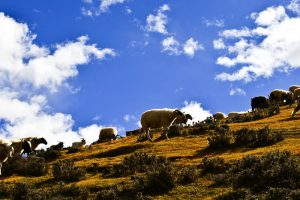
15 Days Tibet Kailash Pilgrimage Tour from Lhasa (fly in and out via Lhasa)
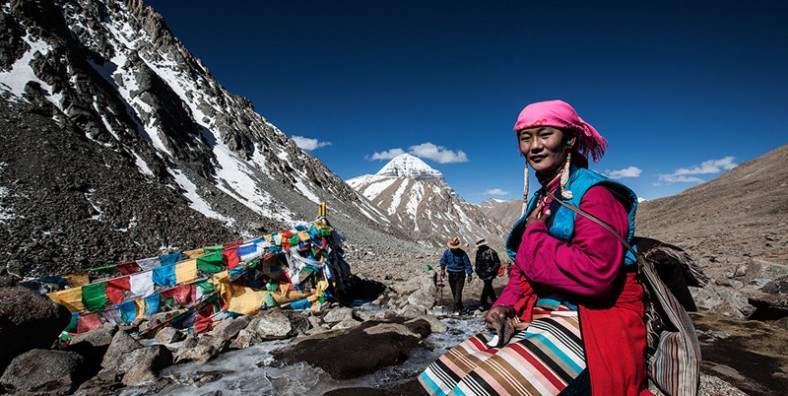
Tour Overview
The highlights of this 15 Days Tibet Kailash Pilgrimage Tour are Mount Everest Base Camp and Mount Kailash. The first three days are spent in Lhasa visiting the iconic...
Code of Tour: YCT0000003518
Length of Travel: 15 Day
Destinations of Tour: Lhasa - Shigatse - Saga - Lake Manasarover - Mt. Kailash trek - Darchen- Drirapuk - Saga -Shigatse- Lhasa
Departure City: Lhasa
Price of Tour: Request
Type of Tour:
Features of Tour: Nature Hiking Minority Landscape
The highlights of this 15 Days Tibet Kailash Pilgrimage Tour are Mount Everest Base Camp and Mount Kailash. The first three days are spent in Lhasa visiting the iconic Potala Palace and other famous places at this holy city till you get acclimatized sufficiently. Then, head for Mount Everest Base Camp to enjoy the most beautiful sunrise and starry sky of Mt. Everest. After Mt. Everest, move to Saga, then to Darchen via the holy tranquil Lake Manasarovar. The way from Mt. Everest to Mt. Kailash goes through the nomadic area in western Tibet. Herds of grazing yaks and sheep pass by the window with magical snowcapped lakes and Himalaya ranges at the background. Mt. Kailash is recognized as the lofty mountain in the world, and the center of the world by Hinduism, Tibetan Buddhism, Bon – native religion in Tibet and Jainism. Finally, get back to Lhasa to finish the tour.
Highlights:
- Experience the Tibetan Buddhism in the main monasteries in Lhasa city and along your way;
- Enjoy the starry sky and stunning sunrise of the highest mountian in the world-Mt. Everest;
- Meet snown mountains, tranquil lakes, shimmering rivers, Tibetan villages and rare animals on your way;
- Trekking the most sacred and mythical mountain in the world-Mt. Kailash.
Brief Itinerary
- Day 1: Lhasa Arrival
- Day 2: Lhasa
- Day 3: Lhasa
- Day 4: Lhasa-Shigatse
- Day 5: Shigatse-Sakya-Tingri
- Day 6: Tingri-Rongbuk-EBC
- Day 7: Rongphu-Saga
- Day 8: Saga-Darchen
- Day 9: Darchen-Drirapuk
- Day 10: Drirapuk-Dzutrpuk
- Day 11: Dzutripuk-Darchen
- Day 12: Darchen-Saga
- Day 13: Saga-Shigatse
- Day 14: Shigatse-Lhasa
- Day 15: Lhasa Departure
Google Map
Detailed Itinerary
Day 1 Arrival in Lhasa (3650m)
Sightseeing and Activities:Arrive in Lhasa
Accommodation:Lhasa
Meals:None
When you arrive in Lhasa either by train or flight, your guide will greet you and take you to your hotel .An route to viewing the Yarlung Tsangpo River/ Bhamaputra river (the Longest and largest river in Tibet) and Lhasa river. After arrive in lhasa, you can take rest and acclimatize. If you feel to go out, then you can go to the Potala square, where you will enjoy the fountain with different color and get amazing photos of the Potala and around. Stay overnight in Lhasa.
Day 2 Lhasa
Sightseeing and Activities:Potala Palace, Jokhang Temple, Barkhor Street
Accommodation:Lhasa
Meals:Breakfast, Lunch
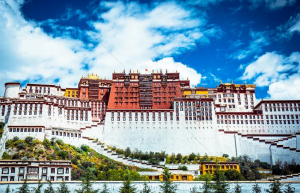
Today’s tour will first bring you to the Potala Palace, the winter palace of the Dalai Lama. It has been used since the 7th Century by the 33rd great king of Tibet. The most valuable collection are the gilded burial stupas of past Dalai Lamas and meditation Cave of the 33rd great king of Tibet.
After you take lunch and then head to Jokhang Temple which was founded by the 33rd great king of Tibet in the 7th century, in order to promote the Buddhist religion. Inside you can see the statue of Buddha Sakyamuni at the age of twelve, perhaps the single most venerated object in Tibet Buddhism.
Around the temple Barkhor Street where you can do kora (circling the Barkhor street) with pilgrims and locals and buy the souvenirs. Stay overnight in Lhasa.
Day 3 Lhasa
Sightseeing and Activities:Drepung Monastery, Carpet factory, Sera Monastery
Accommodation:Lhasa
Meals:Breakfast, Lunch
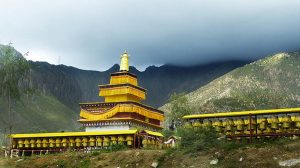
In the morning, you are going to visit Drepung Monastery which was one of the “three greet” Gelug monasteries of Tibet and was founded in 1416 by Jamyang choge, one of the Tsongkhapa’s main disciples. Ganden palace is used as Dalai lama’s palace in the Drepung before moving to the Potala palace.
Afternoon, Sera Monastery—It was one of the “three great” Gelug monasteries of Tibet and was founded in 1419 by Jamchen chojey, one of the Tsongkhapa’s main disciples. The highlight is the Monks debate at around 3 – 5 in the afternoon. Stay overnight in Lhasa.
Day 4 Lhasa to Shigatse via Gyantse (370km)
Sightseeing and Activities:Lhasa – Yamdrotso Lake – Shigatse (10 hrs, 370km)
Accommodation:Shigatse
Meals:Breakfast, Lunch
Passing by the green farmland of Nyangchu Valley, Yamdro-tso Lakes, Karo-la Glacier roadside at 4960m, we move westwards to Tibet’s traditional town, Gyantse. The most important attraction for today is Yamdro-tso Lake, and Kubum Monastery in Gyantse. Yamdro-tso Lake is shaped like coiling scorpion with deep blue in color and Kubum Monastery has a 35m-high chorten (stupa) with its white layers trimmed with decorative stripes and its crown-like golden dome. Today, we drive to Shigatse, which is the second biggest city of Lhasa. Overnight in Shigatse.
Day 5 Shigatse – Sakya – Tingri(290km)
Sightseeing and Activities:Shigatse – Sakya – Tingri (10hr, 290km)
Accommodation:Tingri Hotel
Meals:Breakfast, Lunch
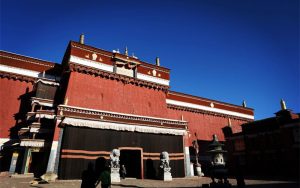
In Shigatse, you will visit the famous Tashilhunpo Monastery where you can see the well preserved largest statue of Jampa (future god) in the world. The monastery itself is abiding place for the successive Penchen Lamas. Drive to theSakya County where you can visit the famous Sakya Monastery. The most interesting thing in Sakya sect is that the sect does not believe in reincarnation and the head of Sakya sect will wear white cassock and also marry and have children. Then forwards to world highest pass Gyatso-la pass with 5200 m above sea level, and then drive to Tingri, the entrance of Himalayan Nature Reserve. Overnight in Tingri
Day 6 Tingri to Rongbuk to EBC (90km)
Sightseeing and Activities:Tingri to Rongbuk Monastery and Everest Base Camp (3 hrs, 90km)
Accommodation:Guest House
Meals:Breakfast, Lunch
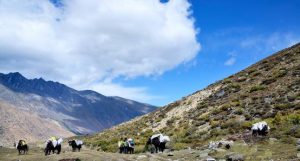
There is only 2-3hours driving from Tingri to Rongpuk through 90km new winding road in the mountains. On the way from Tingri to E.B.C, you can enjoy the stunning mountain scenery; pass the wild grassland, the torrent and soaring mountains. If it is in clear weather, you can see the panorama of Himalaya Range and among mountains you can see 4 mountains which are 8000m high and more to enjoy like Mt. Lhotse (8516m), Mt. Everest (8848m), Mt. Cho Oyu (8201m) and Mt Makalu (8463m), and even majestic view of golden summit of Mt. Everest at sunset.
Stay overnight in Ronguk Guest House or local Tibetan Tent
Day 7 Rongphu–Saga (460km)
Sightseeing and Activities:Rongphu Monastery – Everest Base Camp – Saga (13hrs, 460km)
Accommodation:Guest House
Meals:Breakfast, Lunch
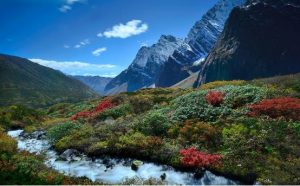
We need to take the old tingri road to Sagar County. From the old Tingri, you can see the Mt. Everest and Mt. Shishapangma which is at 8012m was the least of the world’s 8000m peaks to be climbed. The road condition worsens from old tingri and runs parallel to the Himalayan ranges and Nepalian sides called Anapurna ranges. The main road passes through the desolate plain of Digur tang, with its enormous sand dunes and the closely neighboring snow peaks of Shishapangma and langtang to the south. Leaving the bum-chu basin, it then descends into the depression of Peiku-tso Lake (4600m), a cobalt blue lake. Today we drive to Saga, a small town 69km from the Phelgu tso.
Overnight at local guesthouse of Saga
Day 8 Saga to Darchen, via Lake Manasarova (550km)
Sightseeing and Activities:Saga to Lake Manasarova to Darchen(14hrs, 550km)
Accommodation:Guest House
Meals:Breakfast, Lunch
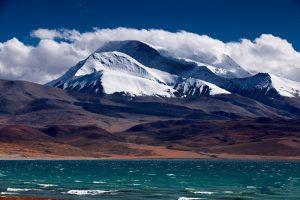
Moving towards the Drongpa County, the region around the sources of Brahmaputra River, which is about 167km from the Saga town. At about 50km from today’s destination Darchen, we will make a small detour to Lake Manasarovar, the holy lake of Tibetan and Hinduism. You can relax around the lake shore and experience the natural beauty of the lake. In the summer time, flocks of swans will gather on the lake, bringing grace and life to the area. You can also see so many Tibetans and Hindus praying and circling around the lake shore, snow capped mountains on the background and hundreds of swans gathering on the lake, attracting hundreds and thousands of tourists from all over the world. In late afternoon, we will reach Tarchen, a small town at the foot of Mt. Kailash. Tour guide will assist tourists to arrange trekking yaks and porters and doing some preparation for your following 3 days trekking around Mt.Kailash.
Overnight at local guesthouse in Darchen town
Day 9 Darchen-Drirapuk (Trek 12km)
Sightseeing and Activities:Trek Day One – Darchen to Drirapuk (6.5 hrs, 20km)
Accommodation:Guest House
Meals:Breakfast, Lunch
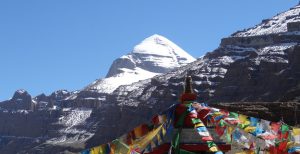
The Traditionally pilgrims undertake 52 km trekking circuit around Mount Kailash, commencing at Darchen (4574m) and crossing the Dolma-la Pass on the second day of the three day walk. 8 kilometers after leaving Darchen with environment-friendly bus (40minutes), we get to a village called Sarshung, where porters are waiting for their clients. After two hours, we come upon a grassy plain populated by nomads. For this turn in the valley it is another two hours at least before reaching Drirapuk(4920m). You need to camp or can rest in monastery’s guest house made from cement with a few good facilities than others in Drirapuk. At the opposite side of Drirapuk, there you can see small monastery with its guest house little cleaner than others.
Stay overnight at the tent guesthouse of monastery.
Day 10 Drirapuk-Dzutrpuk (Trek 22km)
Sightseeing and Activities:Trek day two – Drirapuk to Dzultripuk (18km, 7-8hours)
Accommodation:Guest House
Meals:Breakfast, Lunch
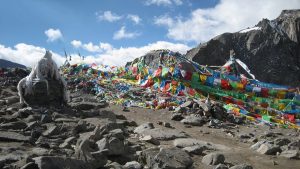
The second day is the hardest and most tough circuit with the Dolma-la pass lying 6.4km ahead but 762m above Drirapuk. The peak of Dolma-la Pass is about 5630m above sea level, so it is better to set off early in the morning as the sun rays break over the ridges above. After taking a rest at the peak of Dolma-la pass, you will descend staircase bringing you to Lhachu valley floor, taking about one hour from the pass. From here it is still four hours trekking to the today’s final destination with no shelters on the way. It is better to walk on the right side of the river and finally get to Dzultripuk (with miracle cave of milarepa). It is advisable to get there before other groups because limited numbers of rooms are available there in Dzultripuk. Take a good rest in the guest room and prepare for next morning’s departure.
Stay overnight at the tent guesthouse of monastery.
Day 11 Dzutripuk-Darchen Via Lake Manasarvor (Trek 11km)
Sightseeing and Activities:Trek day three- Dzultripuk to Darchen (14km, 3-4hours)
Accommodation:Guest House
Meals:Breakfast, Lunch
Today, we will go through Milarepa’s cave, where the temple and shrines have been built around. Then we walk back to Darchen is easy and the exit from the valley can be reached within three hours. At the ending point of the valley, the driver will come to pick you and take you back to Darchen.
Stay overnight at the local guesthouse at Tarchen.
Day 12 Darchen-Saga (510km)
Sightseeing and Activities:Drive from Darchen to Saga (530Km, 14 hours)
Accommodation:Guest House
Meals:Breakfast, Lunch
Drive back along the incoming road.
Day 13 Saga to Shigatse (448km)
Sightseeing and Activities:Saga to Shigatse to Lhasa (2 days, 750km)
Accommodation:Lake Manasarvor Hotel
Meals:Breakfast, Lunch
Drive back along the incoming road to Shigatse, overnight at Shigatse.
Day 14 Shigatse to Lhasa (280km)
Sightseeing and Activities:Saga to Shigatse to Lhasa (2 days, 750km)
Accommodation:GangGyan Hotel
Meals:Breakfast, Lunch
Drive back along the incoming road to Lhasa. Check into the hotel for a good rest. Enjoy your free time then.
Day 15 Lhasa Depart
Sightseeing and Activities:End the tour, Airport drop off.
Accommodation:None
Meals:Breakfast
(Or Go to Nepal after Tibet Mt.Kailash Tour)
Customers can leave Saga to Kathmandu Nepal through China-Nepal border Zhangmu, It takes 2 full days driving from Saga. Now, the Tibet-Nepal border is close due to earthquake, so only Saga to Lhasa option is available.
Recommended Hotels
| Destination | 5 Star | 4 Star | 3 Star |
| Lhasa | Luxury St. Regis Lhasa Resort | Lhasa Gang Gyan Hotel | Lhasa Xiongbala Hotel |
| Shigatse | / | Shigatse Manasarovar Hotel | Jiumu Yamei Hotel in Shigatse |
| Tingri | / | / | Tingri Everest Shanghai Hotel |
| Saga | / | Xibu Yizhan Hotel | Brahmaputra Hotel |
| Darchen | / | / | Darchen New Hotel |
Service Included:
- Admission fees for all of the sightseeing spots listed in the itinerary;
- Meals as listed in the itinerary;
- Accommodation with breakfast as listed in the itinerary;
- Private English-speaking tour guide and vehicle for transfers & sightseeing;
- Service charge & government taxes;
- Luggage transfers between airports and hotels;
- Two bottles of mineral water each day.
Service Excluded:
- Any arrival and departure international airfares or train tickets;
- Chinese visa fees;
- Excess baggage charged by Airlines;
- Single room supplement;
- Tips to guides and drivers;
- Personal expenses and gratuities to service staff;
- Personal travel insurance;
- All optional programs;
- Domestic air tickets fares with airport tax and fuel extra fee based on economy class mentioned in the program.
Travel Tips:
- Tibet Permits
There are several permits required to visit Tibet. Tibet Entry Permit, issued by Tibet Tourism Bureau, is the most important one which has to be obtained before your trip because you must have it to take your flight/train to Tibet. To get the permit, you have to book a Tibet tour with us, and send us your passport and Chinese visa about 20 days in advance, and then let us apply for the permit (all Tibet permits can only be applied by travel agency). If you travel to other prefectures like Shigatse, Nyingchi, Shannan, etc, you also have to obtain an Alien Travel Permit. If you travel to Mount Everest, you have to obtain a Border Permit. (Tibet Discovery, with office in Lhasa, has always kept up with the latest news on Tibet Permits. Traveling with us, all your permits are guaranteed as long as you are qualified to the requirements.)
- Available Months to Visit Tibet
Generally speaking, May to early October is the best time to for a Mount Kailash trip. July and August are the peak season and rainy season. It may be too cold to travel in Kailash area from November to March. There is usually heavy snow. The conditions in Namtso Lake and Mount Everest area are quite similar with Kailash. While other places like Lhasa, Gyantse and Shigatse are suitable for travel all year around.
- High Altitude Sickness
The average altitude of Tibet is about 4000 meters above the sea level (Lhasa: 3700m; EBC: 5200m; Namtso: 4718m). You may suffer a bit from High Altitude Sickness in the beginning days of your Tibet trip if you haven’t had rich high plateau travel experience. But don’t worry too much, the high altitude can be acclimatized usually in 2~3 days. Our suggestion is to take a physical examination and get suggestions from your doctor, and also bring some medicines to prevent from High Altitude Sickness before your trip. While in Tibet, you should keep warm all the time, avoid strenuous activities, drink more water and eat more vegetables and carbohydrates. You’d better not take showers during the first two days after your arrival at Tibet. If you don’t feel well, get help from your tour guide or go to the hospital without any delay.
- How to Go to Tibet
Basically you have two options – flight and train. Currently, you can take a flight to Lhasa from Beijing(4.5hrs), Xian(3.7hrs), Chengdu(2.5hrs), Chongqing(3hrs), Kuming(3hrs), etc. Among all these cities, Chengdu and Xian have more frequent flights to Lhasa. Kathmandu also has several flights to Lhasa each week.
If you a train travel, you can take a train to from Beijing(40.5hrs), Xian(32hrs), Chengdu(43hrs), Shanghai(47hrs), Chongqing(42hrs), Lanzhou(25hrs), Xining(22hrs), Guangzhou(54hrs).
- Packing and Wearing Ideas
Firstly you can’t forget your passport and Chinese Visa. A large backpack and a smaller one are recommended (the smaller one can be used for daily activities). Also bring the necessary medicine you need. Other stuffs like sunglasses, snow glasses, hats, lip balm, sun block are recommended. As for wearing, you are suggested to dress in layers (both thin and thick jackets). Down jacket is necessary in Spring and Autumn. A pair of durable and comfortable shoes is necessary.



